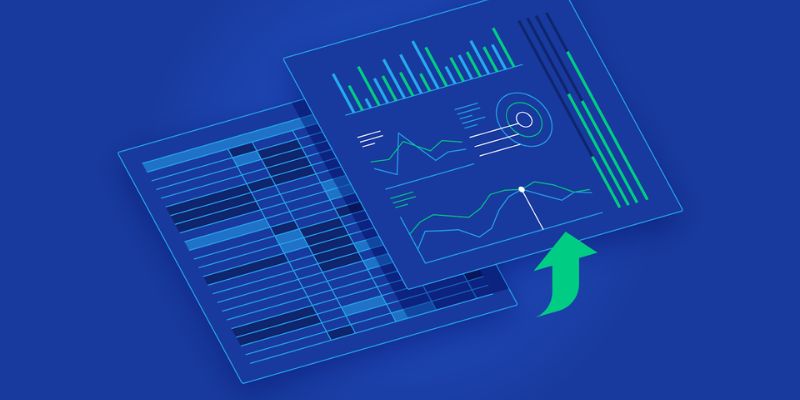
Data visualization is an essential component of modern data analysis, enabling analysts to communicate insights effectively and uncover patterns within datasets. In today’s data-driven world, the ability to convey complex information visually is crucial for decision-making across various industries. This blog explores different data visualization techniques and their significance in facilitating effective analysis. Unlock your Data Analytics potential! Embark on a data science journey with our Data Analytics Course in Chennai. Join now for hands-on learning and expert guidance at FITA Academy.
The Power of Visual Representation
Visual representations of data, such as charts, graphs, and maps, offer a clear and concise way to convey information. Humans are naturally inclined to interpret visual cues, making data visualization a powerful tool for conveying insights quickly and intuitively. By transforming raw data into visual formats, analysts can identify trends, patterns, and outliers more effectively than through textual or tabular representations alone.
Types of Data Visualization Techniques
Bar Charts and Line Graphs: Ideal for displaying trends over time or comparing values across different categories.
Pie Charts: Useful for illustrating proportions or percentages within a whole.
Scatter Plots: Effective for identifying correlations and relationships between variables.
Heatmaps: Provide a visual representation of data density, highlighting areas of high and low activity or concentration.
Choropleth Maps: Depict spatial patterns by coloring geographic regions based on data values.
Read more: What Are the Fundamentals of Data Science?
Importance of Interactive Visualization
Interactive visualization tools allow users to explore data dynamically, enabling deeper insights and discovery. Features like zooming, filtering, and drill-down functionality empower users to interact with data in real time, fostering a more engaging and immersive analysis experience. Interactive dashboards and visualizations also facilitate collaboration among team members, as multiple stakeholders can explore and interpret data simultaneously. Learn all the Data Analytics techniques and become a data Analyst. Enroll in our Data Analytics Courses In Coimbatore.
Best Practices for Effective Data Visualization
Simplicity: Keep visualizations clean and uncluttered to avoid overwhelming viewers with unnecessary details.
Clarity: Ensure that labels, legends, and annotations are clear and easy to understand.
Consistency: Maintain a consistent color scheme and design style across all visualizations to enhance readability and comprehension.
Accuracy: Verify the accuracy of data and avoid misleading visual representations that may distort or misinterpret information.
Accessibility: Ensure that visualizations are accessible to all users, including those with visual impairments, by providing alternative text descriptions and keyboard navigation options. Enrolling in Data Analytics Courses in Bangalore equips professionals with the skills to create inclusive and user-friendly visualizations, ensuring data-driven insights are accessible to everyone.
Real-World Applications of Data Visualization
Business Intelligence: Visual dashboards are powerful tools that help businesses monitor key performance indicators (KPIs) and track progress toward strategic goals in real time. These dashboards provide a clear and concise representation of critical data, enabling decision-makers to identify trends, assess performance, and take timely corrective actions to achieve organizational objectives.
Healthcare Analytics: Visualizations play a crucial role in healthcare by making complex patient data more understandable. They help in identifying trends such as disease outbreaks, treatment efficacy, and patient recovery rates. This, in turn, improves diagnosis, treatment planning, and overall healthcare outcomes, enabling medical professionals to make evidence-based decisions.
Environmental Science: Visual tools like maps, graphs, and charts are crucial for analyzing environmental data, helping policymakers track temperature changes, air quality, and biodiversity loss. Data Analytics Courses in Marathahalli teach professionals to use these tools for effective analysis and informed decision-making in environmental conservation.
Financial Analysis: In the financial sector, visualizations are indispensable for understanding stock market trends, analyzing investment portfolios, and assessing risks. By presenting data in an intuitive and visually appealing format, visualizations enable investors, analysts, and financial advisors to make data-driven decisions, optimize investment strategies, and mitigate potential risks effectively.
Social Media Analytics: Visual representations of social media metrics, such as likes, shares, comments, and follower growth, provide valuable insights into audience engagement and behavior. These insights help marketers and content creators refine their strategies, create targeted campaigns, and enhance overall brand performance across digital platforms.
In conclusion, data visualization techniques play a vital role in enhancing data analysis by transforming complex information into easily digestible visual representations. From simple bar charts to interactive dashboards, visualizations enable analysts to uncover insights, communicate findings, and drive informed decision-making across various domains. By leveraging the power of visualization, organizations can extract maximum value from their data assets and gain a competitive edge in today’s data-driven landscape. Explore the top-notch Advanced Training Institute in Chennai. Unlock coding excellence with expert guidance and hands-on learning experiences.
Read more: Data Science Interview Questions and Answers